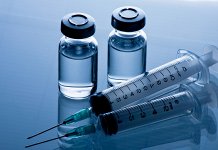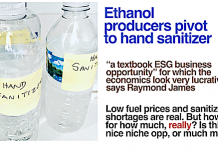Jim Lane
Ultra-secret yeast tech also exceeding expectations in yield, productivity and quality, BioAmber reports.
Baby Sarnia checks in at 60 million pounds, no ounces, doing fine.
In Canada, BioAmber’s (BIOA) Sarnia joint venture with Mitsui & Co. Ltd. has begun shipping bio-succinic acid to customers and is operating its manufacturing process at commercial scale, meeting a significant company milestone, the company said.
Yeast biotechnology exceeds performance targets
BioAmber has confirmed the performance of its proprietary yeast in the production fermenters in Sarnia. The fermentation performance achieved is significantly above the initial targets set for 2015, and the yield and productivity levels already exceed the targets the plant was designed to hit longer term. The bio-succinic acid being produced is of higher quality than the product previously produced in the demonstration plant located in France.
Customer shipments initiated
Initial shipments have started to customers so they can confirm the quality of the bio-succinic acid produced in the Sarnia plant. Management expects the Sarnia plant to be in commercial operation later this month and to increase production volumes progressively to reach full capacity in 2017.
3 lessons learned so far in the BioAmber story
1. Limited feedstock risk is a good idea. BioAmber is using relatively plentiful Ontario corn sugars that are generally available in the sub-$4 range, and for which a supply chain is already in place.
2. Think advantaged fermenation, not advanced. Succinic acid is one of the most efficient targets, starting from dextrose. C4H6O4 succinic, from C6H12O6 dextrose that’s up to 98% theoretical efficiency, much higher than making hydrocarbons or alcohols from sugar. Plus, it’s a one-pot system compared to stepping up to succinc from a petroleum-based hydrocarbon.
3. Creative offtake partnerships make a real difference. The take-or-pay partnership with Vinmar for boatloads of succinic acid relieves a young company from the burden of identifying and capturing all the global customers, and aids immensely with financing by offloading some market risk. Under the terms of the 15-year agreement, Vinmar has committed to purchase and BioAmber Sarnia has committed to sell 10,000 tons of succinic acid per year from the 30,000 ton per year capacity plant that is currently under construction in Sarnia, Canada.
One lesson left to learn
Will the technology reach nameplate capacity, and when? That’s a questino not only of the yield but the at-scale rates and titers and whether the economic lift from sugar to succinic supports the capex. BioAMber says, emphatically, yes and we’re standing by for confirmation when the company reaches expected capacity in 2018.
More about BioAmber, including growth potential and future milestones
The Digest’s 2015 8-Slide Guide
The Digest’s 2015 5-Minute Guide
Reaction from BioAmber
Not surprisingly, some proud peacocks around Planet BioAmber.
“The operational ramp-up is ongoing and our fermentation results have exceeded all expectations, offering us the prospect of better operating margins than we had originally projected,” said Fabrice Orecchioni, BioAmber’s Chief Operations Officer. “We have a remarkable group of dedicated employees in the plant, supported by excellent engineers, and our decision to hire and train them well in advance of the startup is paying dividends. We are only a few weeks from commercial production and our yeast has already proven to be operationally robust and efficient, and our purification process is producing the high quality bio-succinic acid that we expected,” he added.
Jim Lane is editor and publisher of Biofuels Digest where this article was originally published. Biofuels Digest is the most widely read Biofuels daily read by 14,000+ organizations. Subscribe here.








